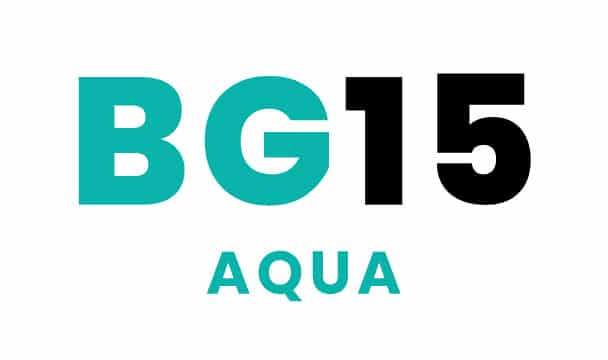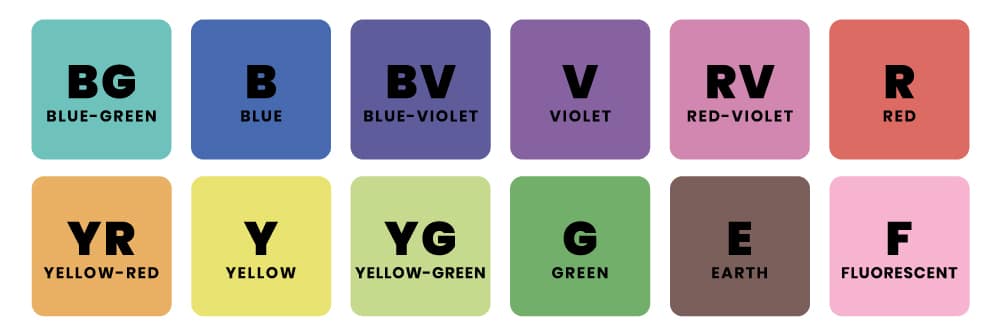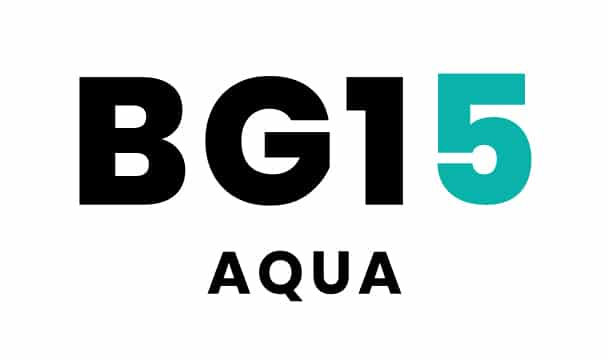The Copic Colour System

Before you start creating Copic Marker Art you need to understand the Copic Colour System, which is defined by a series of letters and numbers.
Colour Families
The letter(s) on your marker represents the colour family it falls into. They are also accompanied with an official Copic colour name written underneath the lettering/numbering system.

There are currently 16 Copic Marker colour families that can be grouped into four categories: Chromatic Colours, Fluorescent Colours, Grey Tones and Achromatic Colours.
Chromatic Colours and Fluorescent Colours

Copic’s Chromatic Colours are in essence the same colour breakup you’d see on a regular colour wheel:
- R – Red
- B – Blue
- Y – Yellow
- G – Green
- V – Violet (Purple)
- YR – Yellow-Red (Orange)
- BG – Blue-Green (Teal/Turquoise)
- YG – yellow-green family
- BV – Blue-Violet
- RV – Red-Violet (Pink)
- E – Earth Tones (Brown)
Copic also has a range of 8 fluorescent colours, making up their own individual category.
Gray Tones and Achromatic Colours

Gray Tones
Although Copic’s Grey Tones are each listed as a “colour family”, they are trully achromatic in colour. Each gray tone creates its own feel, and brings its own unique atmosphere to an artwork.
- N – Neutral Gray
- C – Cool Gray
- W – Warm Gray
- T – Toner Gray
Achromatic Colours
Achromatic Colours are represented by number only.
- 1 – Black Copic Markers are defined by 1 (i.e.: 100, and 110 for special -rich- black)
- 0 – Colourless Blender Markers are coded with a single 0. This is due to the fact that they contain alcohol-based fluid with no pigment.
Colour Saturation (Blending Group)

Following the letter(s) is the first number. The first digit represents the level of saturation of your Copic Marker. This number (generally) ranges between 0 -9, with 0 being the purest form of colour and 9 being most desaturated (with the highest level of gray).
Colour Value (Intensity Value)

The last digit(s) on your Copic Marker represent a marker’s colour intensity (aka how bright that colour is). These numbers are split between 12 levels (000, 00 and 0-9).
Markers that fall closer to the 0 range are lighter in value, and become darker the closer they shift toward 9.
Markers that are 000 and 00 in nature are often more transparent as they have a higher concentration of colourless blender alcohol-based fluid.
Copic Marker Skin Tone Numbers
Anime Skin

I use these colours for my Min-Ren Drawings. I rarely ever change the skin colour markers for my Mini-Ren artwork.
E0000: Floral White
Base Colour
E00: Cotton Pearl
Blending
E02: Fruit Pink
Medium Blending
E11: Barley Beige
Shadows
E33: Sand
Minor Shadows
R20: Blush
Cheeks & Mouth
Realistic Coloured Skin

It’s hard to pinpoint exact colours for rendering realistic skin. However, for illustrations such as my Daenaerys artwork which would be lit in a brightly cast day, I tend to use the following markers:
E50: Egg Shell
Base
R00: Pinkish White
Blush, Nose & around Eyes
R11: Pale Cherry Pink
Blush and Lips
R20: Blush
Blush and Lips
YR000: –
General Shading and Forehead
BG000: Pale Aqua
Shadow/Lower Face
RV00: Water Lily
Light Shadow
BV00: —
Shadow
E33: Sand
Darker Skin Areas (i.e.: Eyelid Creases)
Learn How to Use Copic Markers Like a Pro
Don’t know the difference between Copic Marker types? Check out Part One of my Copic series: Copic Sketch VS Ciao VS Classic: Which Markers Should You Use? and find out which marker you should choose based on your art style and creative profession.
If you’d like to discover how to use Copic Markers more effectively, check out my Learn How to Colour Online Art Course.
